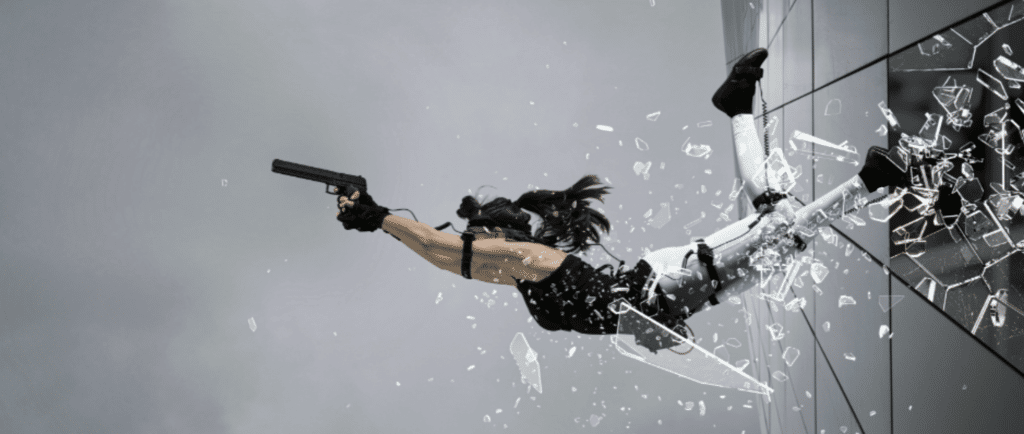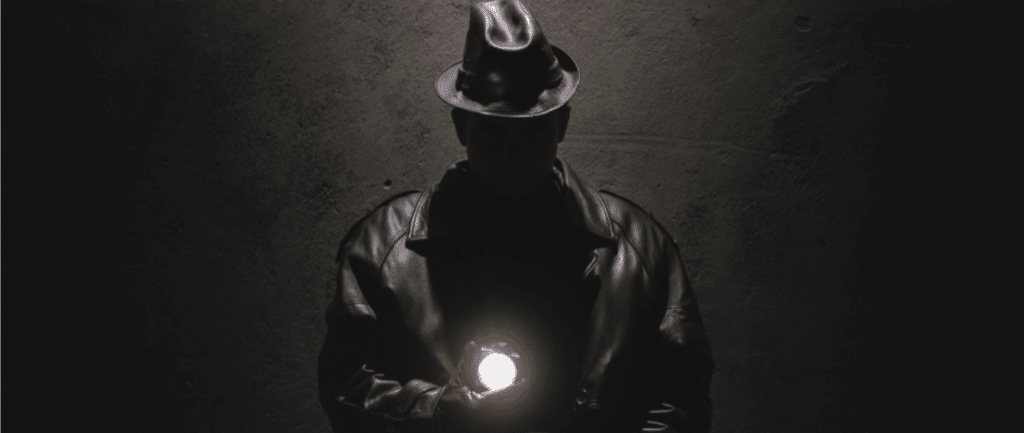
Have you ever noticed how certain story elements seem to pop up again and again in movies? The quirky side-kick. The final face-off between hero and villain. The climactic race against time to defuse a bomb.
These recurring plot devices, character types, and storytelling situations have a name – tropes!
Recognizing common cinematic tropes is an essential skill for screenwriters. In this article, we’ll unpack what tropes are and discuss trope subversion tactics to breathe life into familiar and commonly used formulas.
What is a Trope?

Tropes are considered the trusted building blocks of storytelling that have found their way into countless films and genres. Tropes can be broken down into a few different subcategories:
- Character Archetypes: These are the familiar personalities we encounter in stories – the nerd, the bully, the villain, or the wise mentor.
- Plot Devices: Tropes like secret identities, ticking time bombs, or forbidden love.
- Setting Details: Settings can be tropes too, like the haunted house, bustling marketplace, or rowdy bar, instantly recognizable in a range of different scenarios.
- Narrative Patterns: Tropes also encompass broader storytelling structures, such as the hero’s journey, the heist story, or the enemies-to-lovers trope.
These conventions have become staples in cinema due to the way they quickly paint a picture and tell a story.
When we identify one of these recurring themes in a movie, our mind immediately experiences a comforting sense of familiarity. For instance, when you witness a character venturing alone into a basement in a horror film, you can’t help but mentally shout, “Don’t go in there!” at your screen.
This situation provides the film with a chance to embrace the trope by delivering precisely what we anticipate – the character encountering something terrifying. However, it can also choose to subvert our expectations, allowing the character to emerge from the basement unharmed.
Common cinematic Tropes
So now we know what tropes are, lets dig into some examples across various genres and look at what audiences most commonly come across.
Action Movies
- “The loose cannon cop who plays by his own rules but gets results”. Popularized by franchises like “Lethal Weapon”, “Die Hard” and “Dirty Harry”. These stories are about characters who usually have a troubled past and are seeking their own form of redemption.
- “The Villain Monologue” is a classic storytelling trope that comes to the hero’s aid when they’re captured and facing overwhelming odds. It offers our hero the crucial moments needed for a daring escape. In iconic characters like James Bond, Indiana Jones, and Spider-Man, villains can’t resist sharing their plans. Our hero seizes this chance to escape danger and foil the villain’s scheme in the nick of time.

Romantic Comedies
- “The Meet Cute”. This trope is all about the charming, unexpected first meeting between the romantic leads. In “Notting Hill” (1999), the characters played by Hugh Grant and Julia Roberts have a meet-cute when she accidentally spills orange juice on him in a bookstore.
- “Miscommunication and Mistaken Identity”. A trope where the main characters end up coming together by accident or for gain rather than love. In “The Proposal”. Sandra Bullock’s character, a Canadian executive facing deportation, convinces her assistant, to enter into a fake marriage with her. Misunderstandings and complications arise as they pretend to be a couple, leading to comedic and romantic moments.
Horror Films
- “The Final Girl”. You’ll most likely recognize this trope from slasher or survival horror subgenres. The final girl often refers to the last surviving female character in a horror movie who confronts the antagonist. Notable examples are “Halloween”, “Scream” and “A Nightmare on elm street”.
- “The Villain Isn’t Quite Dead.” A classic trope in storytelling, particularly used in horror and often superhero films, where the audience believes the primary antagonist has been defeated, only to discover that they have survived and are poised for a final, often surprising, confrontation. This trope creates suspense, tension, and a thrilling climax as the hero must face their nemesis once more.
Sci-Fi
- “Bad Robots.” Sci-fi has popularised the theme of ‘man vs machine’ for many years. Films like “The Terminator”, “Ex Machina” and “Blade Runner” showcase both the potential dangers and moral dilemmas associated with artificial intelligence and advanced robotics.
- “Time travel goes wrong.” In this trope, characters attempt to manipulate time, but their actions lead to unintended and often disastrous consequences. This trope explores the inherent dangers and complexities of time travel, highlighting how even well-intentioned actions can result in unforeseen disruptions to the past, present, or future. Films that use this trope are “Back to the future”, “The edge of tomorrow’ and “About Time”.
For more examples of particular tropes, check out this article about moulding your own archetypes and stock characters.
Why Can Tropes Be Problematic?
While tropes can definitely be handy storytelling tools, relying too heavily on these well-worn formulas comes with its own set of challenges.
Firstly, it can make your story feel, well, a bit uninspired and lacking in innovation. When you stick too closely to established tropes, it can be tough to craft something that feels original.
Then there’s the risk of falling into the trap of perpetuating stereotypes and clichés. Your characters and plotlines might end up feeling one-dimensional, lacking that depth and authenticity that makes a story memorable.
Another concern is that leaning too much on tropes can lead to predictable storytelling. When your audience can predict every twist and turn, the excitement and element of surprise start to wane. The worst thing you can do is give the audience the same story they’ve heard a hundred times before.
To steer clear of these common pitfalls, it’s essential for savvy screenwriters to get creative with tropes.
Subverting Tropes
Subverting or deconstructing tropes can be a great way to connect with your audience.
It’s a sure-fire way to captivate your audience with unexpected twists and well-rounded, relatable characters.
So how do you subvert tropes? Here are a few different tactics you could try in your next writing project:
- Gender-Swapping Archetypal Characters: Reimagining iconic characters with different genders can provide a fresh perspective. This reboot of the classic ’80s film franchise Ghostbusters features an all-female team, providing a fresh take on a beloved classic.
- Turning the Chosen One Narrative on Its Head: Instead of the typical destined hero, subvert the trope by portraying a protagonist like Emmet in “The LEGO Movie,” an ordinary construction worker who is mistakenly believed to be the “Special.” With no inherent skills, he relies on his team, adding complexity to the narrative.
- Inserting Anti-Heroes into Traditional Hero Roles: Instead of the conventional virtuous hero, consider placing morally ambiguous or flawed characters in heroic positions. This subversion can lead to intriguing character arcs and moral dilemmas. Marvel has been doing this for years, films like “Venom”, “Deadpool” and “The Punisher” all follow a character that doesn’t quite fit the idea of the traditional hero model.
- Killing Off Characters Unexpectedly Early: Subverting audience expectations about a character’s longevity can create tension and uncertainty. When a character, even a seemingly central one, meets an unexpected demise, it can redefine the direction of the story. Game of Thrones famously did this with Ned Stark early on in the series which fans found shocking. It also made the audience realise that no one was safe in this world and beloved characters could be taken out ruthlessly.
- Changing a Genre’s Usual Setting and Conventions: Changing the rules or the setting associated with a certain genre can be a great way to innovate your story. The film ‘Serenity’ is essentially a western in space. Giving the film a familiar sense of storytelling but in a very original and fun way.
Check out this article to find out more about creating well rounded characters.
Tropes as Tools

At their best, familiar motifs and archetypes provide screenwriters a rich creative toolkit.
Next time you watch a film, pay close attention to the tropes embedded within genre, character and structure. Identifying the common tropes will allow you to decide which ones you love and which ones feel overused and outdated.
Remember, wielding tropes in a way that feels both novel and nostalgic is the hallmark of masterful cinematic storytelling. With the right innovative twist, these recurring narrative ingredients can form something fresh and memorable.
Familiarity and novelty – it’s a tricky tightrope, but walking it can lead to movie magic. That’s the craft and the challenge. And it never gets old!
If you want to find out more about reinventing tropes you’ll find some great information in this article.
Why Do Tropes Persist in Hollywood?
So now we can recognize a trope, why does Hollywood still rely on them? Surely there are better and more unique ways to tell a story? Well there are a few reasons that tropes are still heavily utilized in films:
- Familiar Formulas – Tropes provide quick narrative shorthand, allowing movies to dispense exposition and connect with viewers efficiently. The wise old mentor needs no elaborate introduction for audiences to grasp his role. When we meet Morpheus in The Matrix we already know what his role will be. His entire story function is to help and guide Neo into this unfamiliar world and help him become ready to face the challenges ahead.
- Targeted Demographics – Genre films and blockbusters tailor tropes to appeal to specific audiences. For example, if a studio was writing a romantic comedy they would likely use the meet-cute trope because that is what fans will expect to see in this type of film.
- Proven Success – Financially, tropes are a low-risk bet for studios. Bankable formulas like the triumphant sports film make for a safe investment.
When skilfully executed, tropes can be an effective form of storytelling. But reliance on stale repetition can also lead to cliché and overdone concepts that lack originality. Like with most things, it’s about a balance.
Conclusion
Tropes are the age-old building blocks of cinematic storytelling, providing familiar patterns, character archetypes, and narrative shortcuts. While they offer efficiency, overreliance can lead to unoriginality and clichés that feel dull. The key to mastering tropes lies in skilful subversion, transforming well-worn narratives into fresh, captivating takes on the originals. Through gender-swaps, plot twists, and unconventional settings, filmmakers can breathe new life into familiar formulas.
Remember, using tropes comes with responsibilities. Avoiding cliché, predictability, and tokenism is vital. Subversion should serve the narrative, not merely shock an audience. Everything should always be done with care and intentionality. Screenwriters can harness tropes to create narratives that are both comforting and innovative if they can walk this particular tightrope. The magic of storytelling lies in striking that balance.
